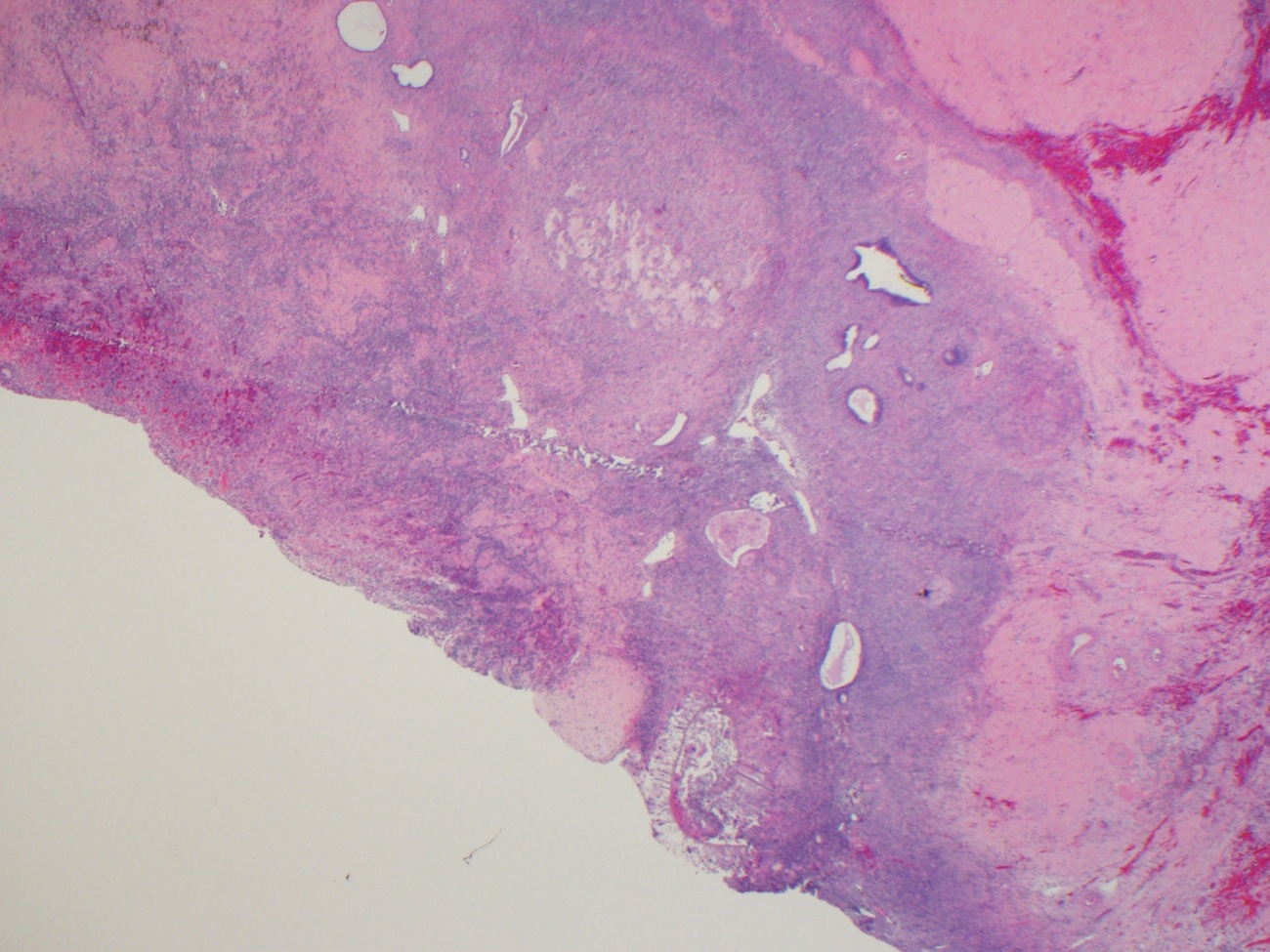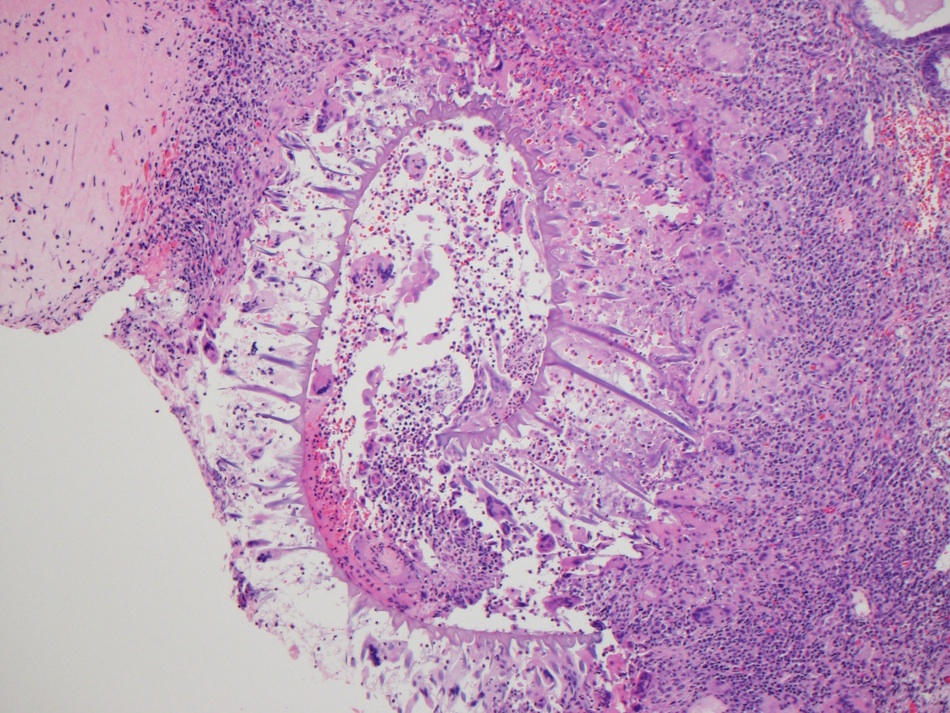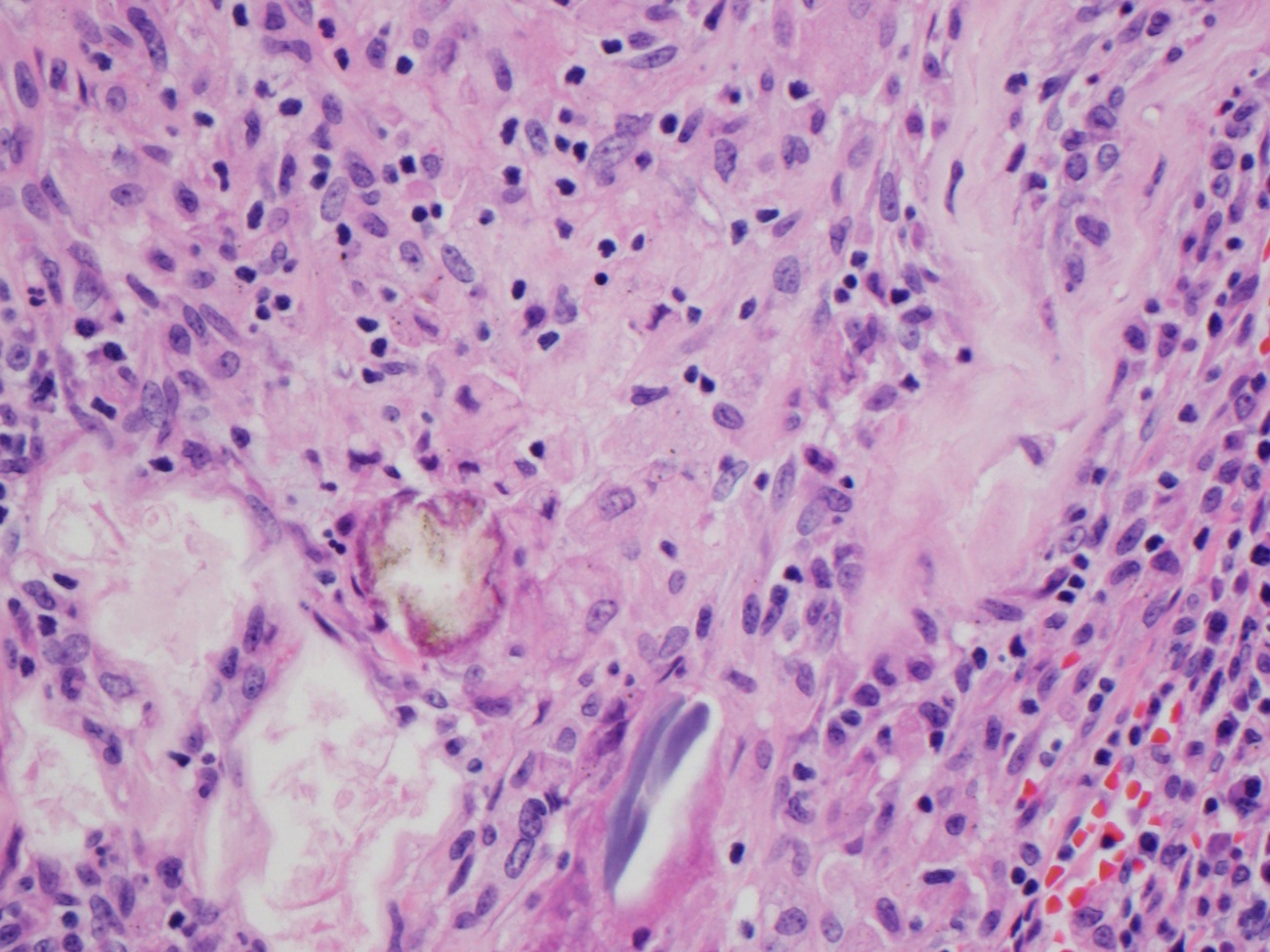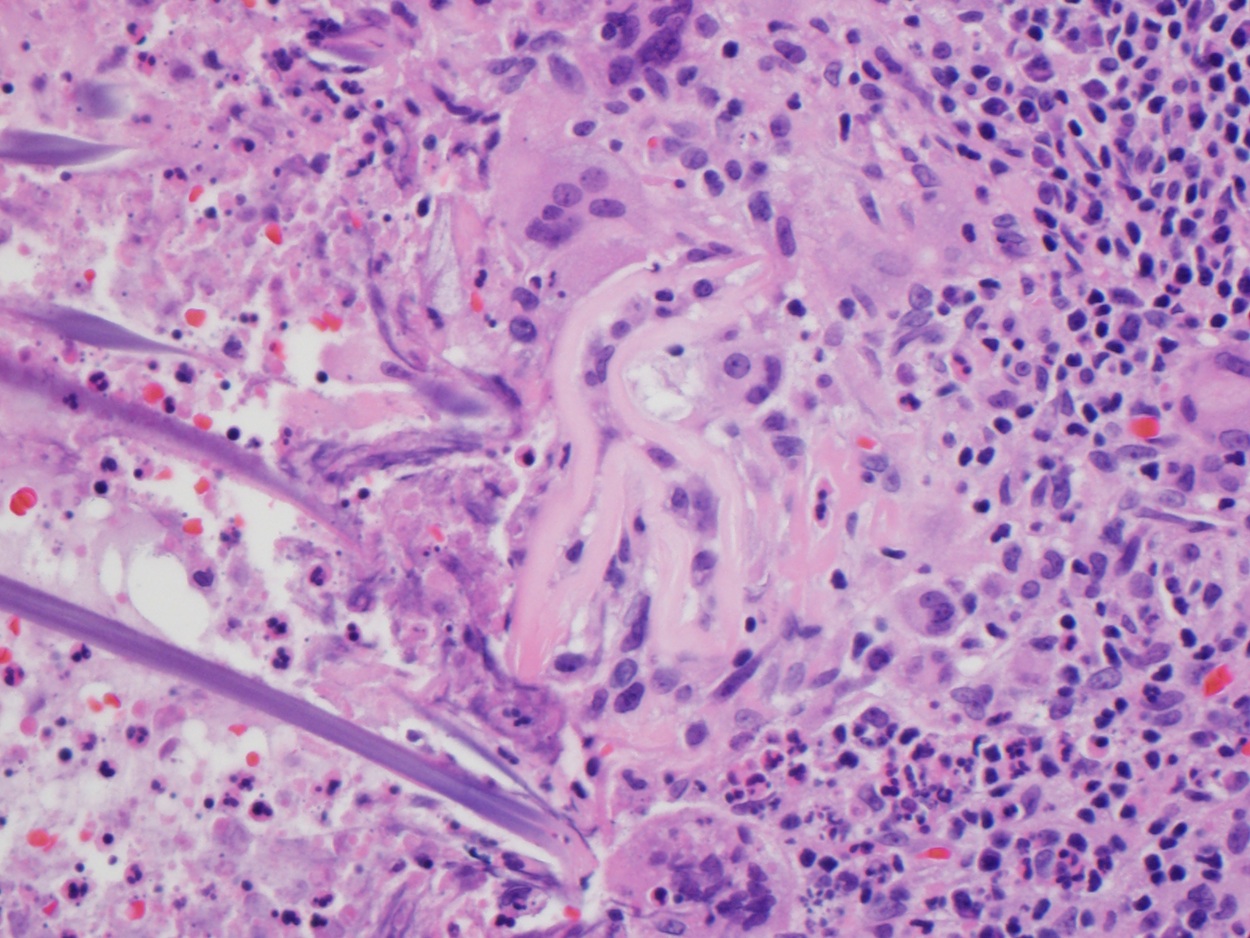21 May 2014 - Case #313
All cases are archived on our website. To view them sorted by case number, diagnosis or category, visit our main Case of the Month page. To subscribe or unsubscribe to Case of the Month or our other email lists, click here.
Thanks to Dr. Raul Gonzalez, Vanderbilt University Medical Center, Tennessee (USA), for contributing this case. This case was reviewed in May 2020 by Dr. Jennifer Bennett, University of Chicago and Dr. Carlos Parra-Herran, University of Toronto.
Advertisement
Case #313
Clinical history:
A 74 year old woman with a history of diverticulitis also had ovarian serous carcinoma. These images are of an incidental finding at surgery.
Microscopic images:
What is your diagnosis?
Diagnosis: Pulse granuloma
Discussion:
Pulse granulomas are rare reactions to food particles, characterized by clusters of small to medium sized hyaline rings (Arch Pathol Lab Med 2006;130:1839). Pulse is the edible seed of legumes. Typically, pulse granulomas are noted in the lungs (associated with aspiration) and in the oral cavity / mandible / maxilla or other portions of the alimentary tract. However, due to their presence in diverticulae and fistulae, they may also be found in the gallbladder, fallopian tubes, skin and other organs (Pathologica 2013;105:59, J Cutan Pathol 2008;35:343). They may also be caused by surgical displacement of vegetable matter (Int J Surg Pathol 2008;16:96). No cases have been reported in the literature involving the ovary.
Histologically, pulse granulomas typically contain thin, faintly eosinophilic hyaline rings mixed with acute and chronic inflammation. The lumina of the rings contain inflammatory cells, erythrocytes, fragments of eosinophilic hyaline material and calcium phosphate. Foreign body type giant cells are usually present but vegetable matter may not be identifiable.
All cases are archived on our website. To view them sorted by case number, diagnosis or category, visit our main Case of the Month page. To subscribe or unsubscribe to Case of the Month or our other email lists, click here.
Thanks to Dr. Raul Gonzalez, Vanderbilt University Medical Center, Tennessee (USA), for contributing this case. This case was reviewed in May 2020 by Dr. Jennifer Bennett, University of Chicago and Dr. Carlos Parra-Herran, University of Toronto.

Scientific Symposiums International Summer CME Series
Surgical Pathology of Difficult to Diagnose Genitourinary, Breast, Pancreatic and Gastrointestinal Lesions
July 7-10, 2014
Hyatt Resort and Spa, Maui, HI (USA)
Register for our upcoming Surgical Pathology Course course being held this July in order to learn how to diagnose genitourinary, breast, pancreatic and gastrointestinal lesions.
Our world-renowned faculty include N. Volkan Adsay, M.D., Kenneth P. Batts, M.D.,, Mahul Amin, M.D., and Melinda Lerwill, M.D..
This course is one not to be missed!
Website news:
(1) Our Feature page for May is Computer Software & Systems, and highlights PathView Systems, Physicians Independent Management Services (PIMS) and Voicebrook. It also contains an original short article, "Computer Software and Systems in Pathology: Spectral Imaging", by Jaleh Mansouri, M.D.
(2) We have now posted the Pathology Jobs Report for the first quarter of 2014, available from the Jobs page or by clicking here. Learn what specialties are hot, and what employers are looking for.
Visit and follow our Blog to see recent updates to the website.
(1) Our Feature page for May is Computer Software & Systems, and highlights PathView Systems, Physicians Independent Management Services (PIMS) and Voicebrook. It also contains an original short article, "Computer Software and Systems in Pathology: Spectral Imaging", by Jaleh Mansouri, M.D.
(2) We have now posted the Pathology Jobs Report for the first quarter of 2014, available from the Jobs page or by clicking here. Learn what specialties are hot, and what employers are looking for.
Visit and follow our Blog to see recent updates to the website.
Case #313
Clinical history:
A 74 year old woman with a history of diverticulitis also had ovarian serous carcinoma. These images are of an incidental finding at surgery.
Microscopic images:
What is your diagnosis?
Click here for diagnosis and discussion:
Diagnosis: Pulse granuloma
Discussion:
Pulse granulomas are rare reactions to food particles, characterized by clusters of small to medium sized hyaline rings (Arch Pathol Lab Med 2006;130:1839). Pulse is the edible seed of legumes. Typically, pulse granulomas are noted in the lungs (associated with aspiration) and in the oral cavity / mandible / maxilla or other portions of the alimentary tract. However, due to their presence in diverticulae and fistulae, they may also be found in the gallbladder, fallopian tubes, skin and other organs (Pathologica 2013;105:59, J Cutan Pathol 2008;35:343). They may also be caused by surgical displacement of vegetable matter (Int J Surg Pathol 2008;16:96). No cases have been reported in the literature involving the ovary.
Histologically, pulse granulomas typically contain thin, faintly eosinophilic hyaline rings mixed with acute and chronic inflammation. The lumina of the rings contain inflammatory cells, erythrocytes, fragments of eosinophilic hyaline material and calcium phosphate. Foreign body type giant cells are usually present but vegetable matter may not be identifiable.







